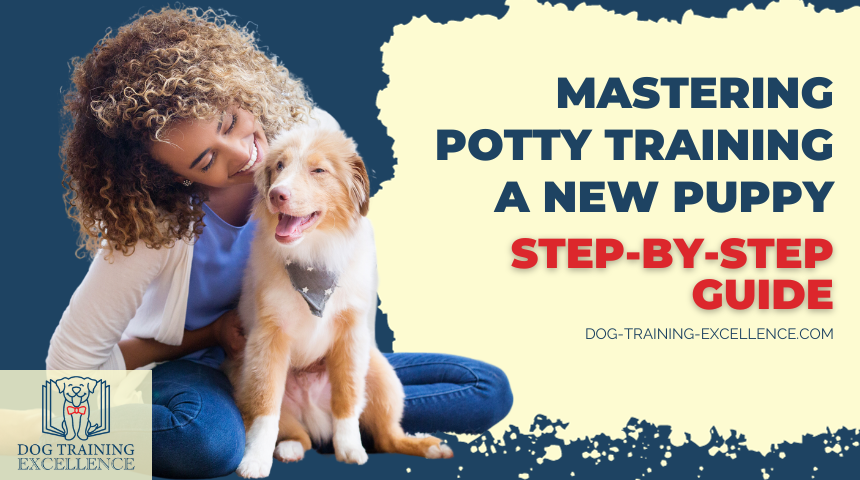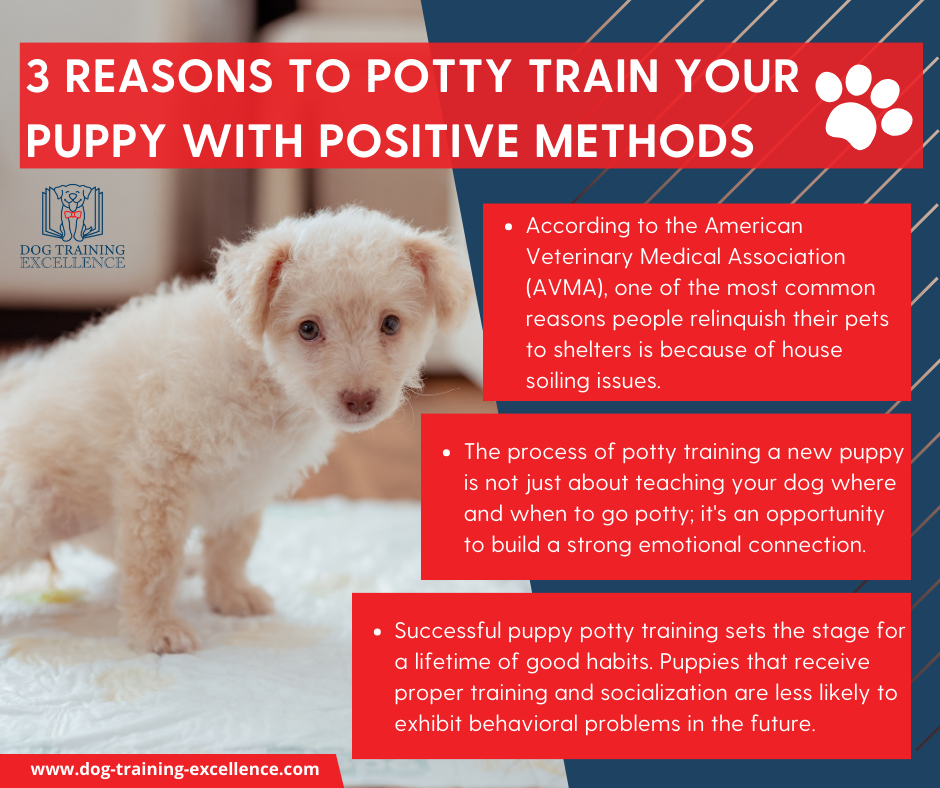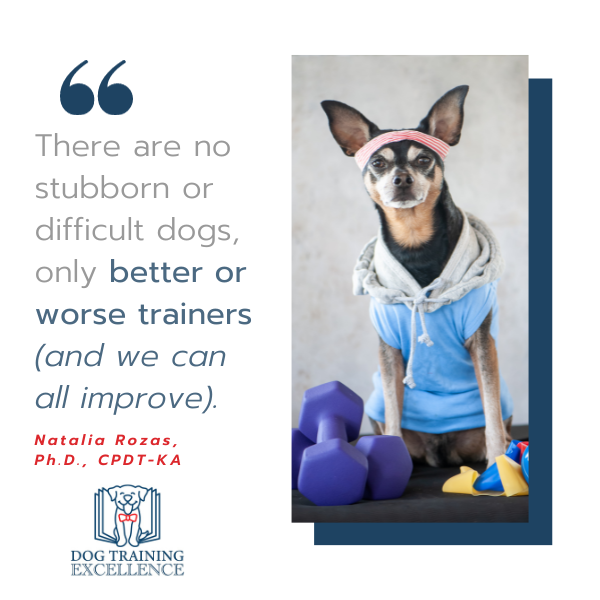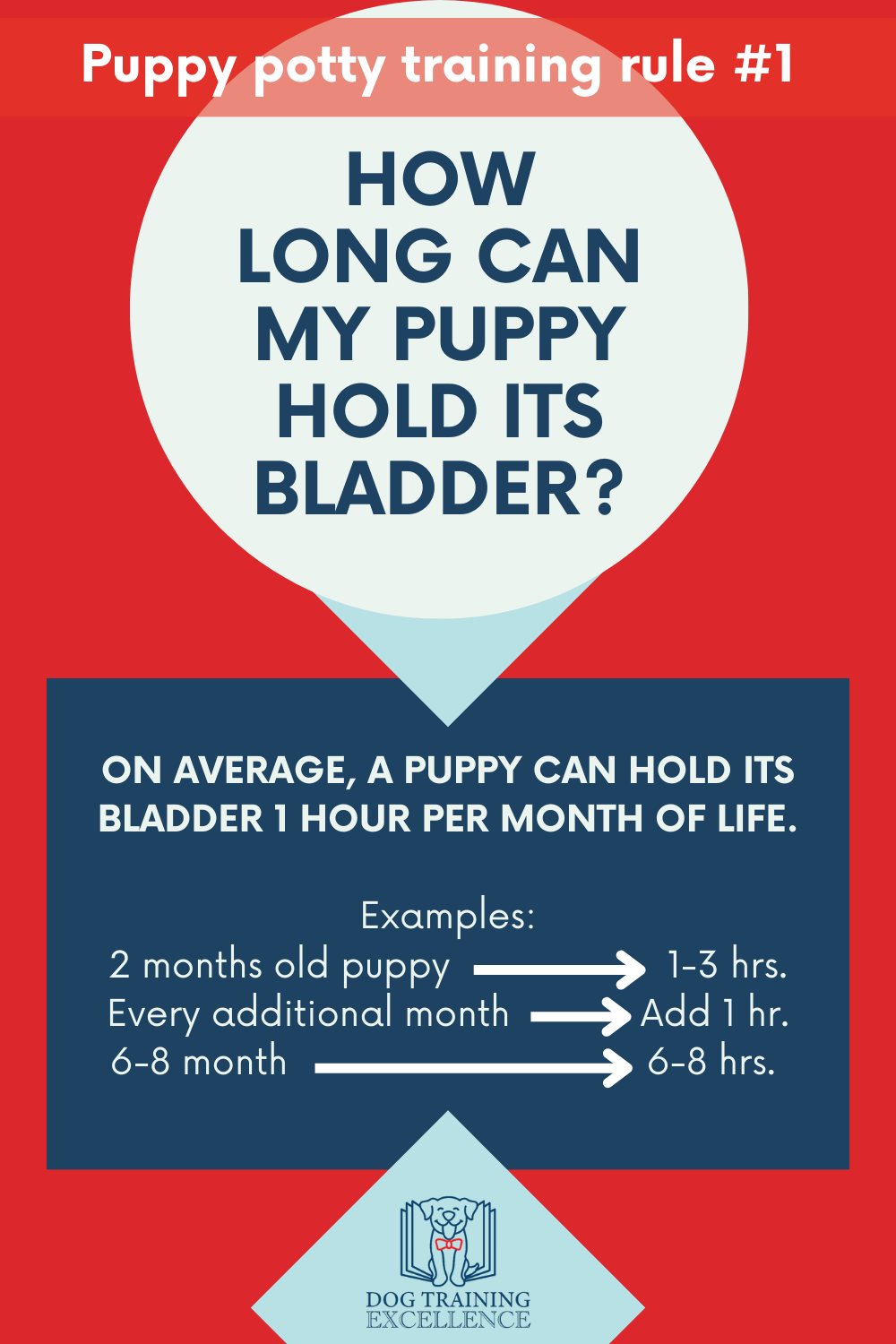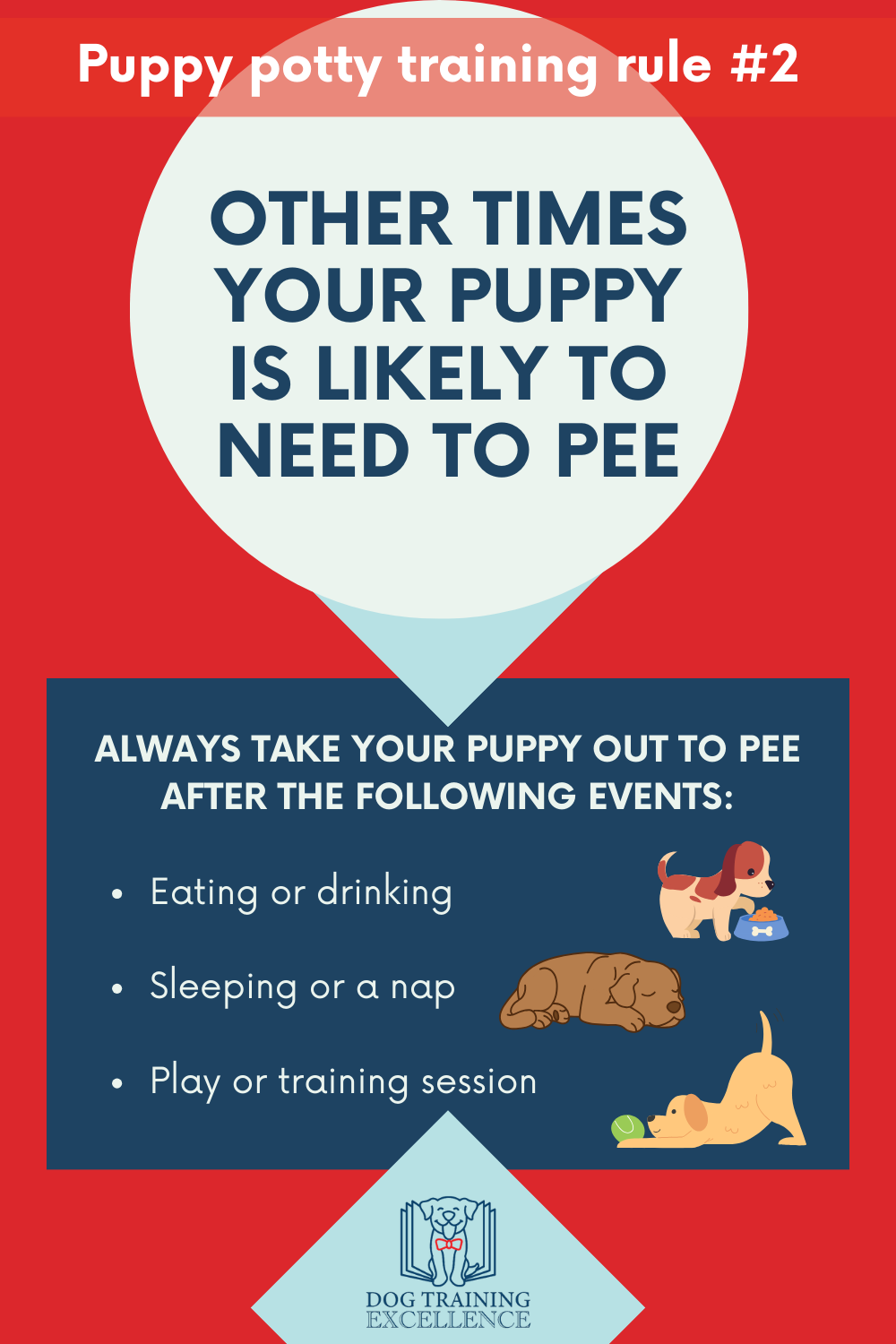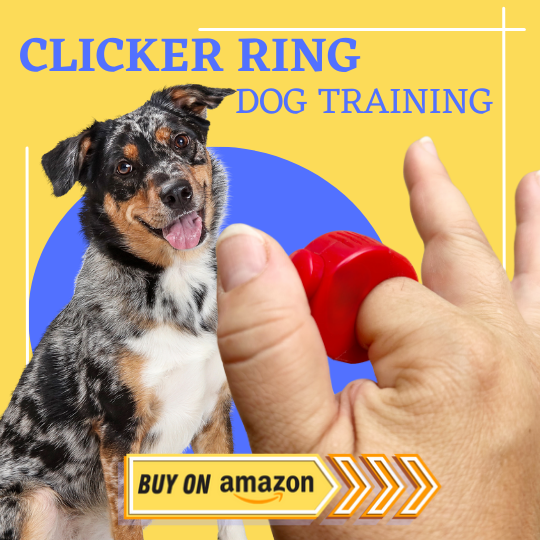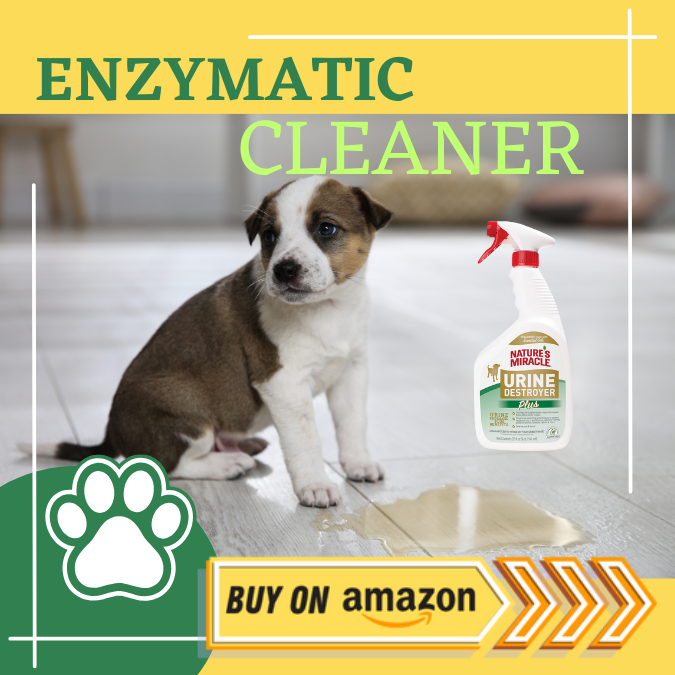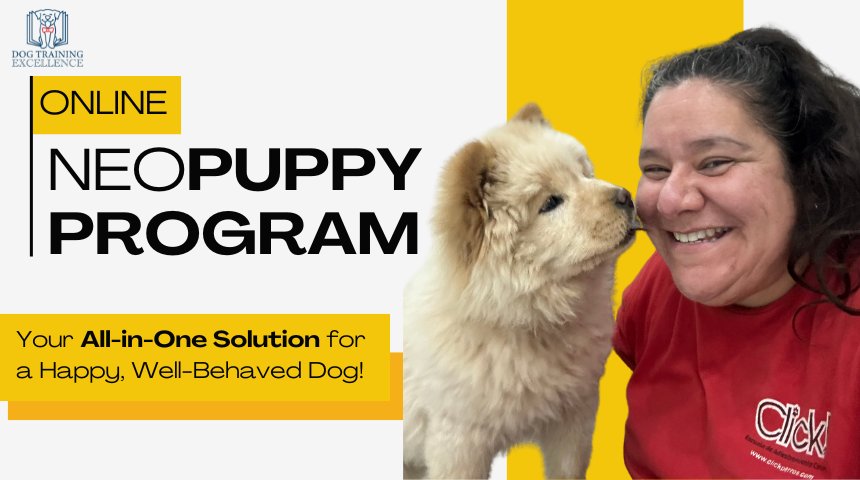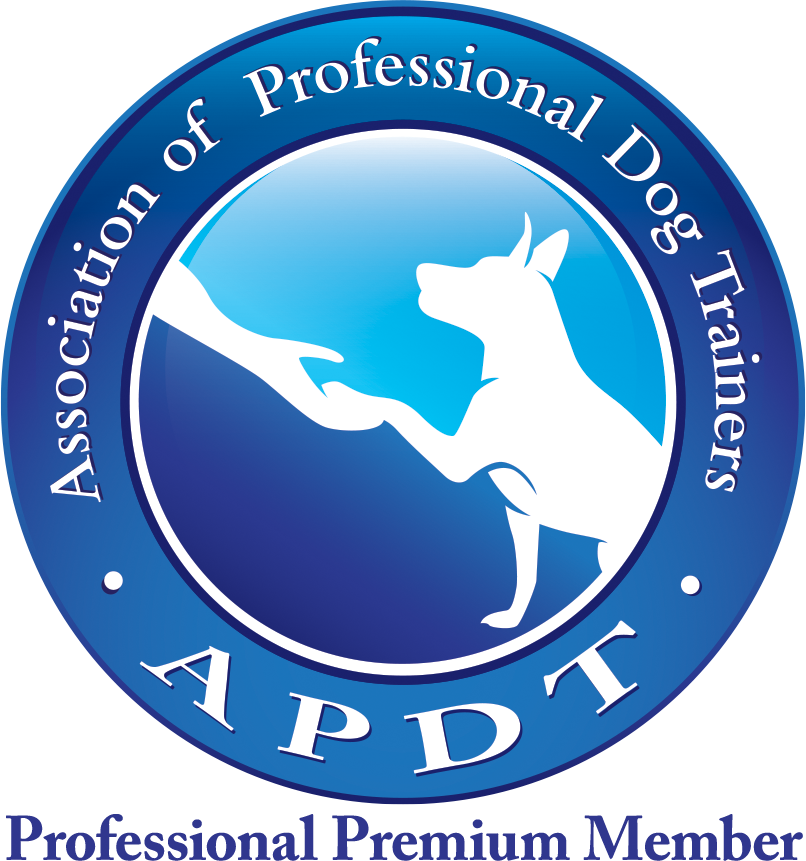I try to write my posts as unbiased as possible and recommend the products I consider to be useful and the best. I use affiliate links, this means that–at no extra cost to you–I can make a commission on a purchase you make after clicking on them. As an Amazon Associate I earn from qualifying purchases.
Mastering Potty Training a New Puppy:
Step-by-Step Guide
Welcome to the challenges of potty training a new puppy! Bringing home a new furry friend is an exciting adventure, but it comes with its share of struggles. Don't worry; I've got you covered! As a Certified Professional Dog Trainer specializing in reward-based and evidence-based methods, I'm here to guide you through the process. In this article, we'll embark on a journey to understand the ins and outs of potty training your new puppy. So, let's roll up our sleeves and get started!
Article Highlights:
The Significance of Proper Potty Training
Before we dive into the nitty-gritty of potty training a new puppy, let's talk about why it's such a big deal. Proper potty training isn't just about preventing accidents on your living room rug; it's a critical part of your puppy's early education. Here's why it matters:
A Harmonious Home Environment
Maintaining a clean and pleasant living space is not just a matter of convenience; it can have a significant impact on your overall quality of life. According to the American Veterinary Medical Association (AVMA), one of the most common reasons people relinquish their pets to shelters is because of house soiling issues. In fact, the ASPCA reports that approximately 10% of dogs surrendered to shelters are there due to problems with house training. This statistic underscores the importance of proper potty training in preventing dogs from being abandoned.
Imagine coming home after a long day at work, looking forward to relaxation, only to find your floors soiled by your dog and having to clean up with special enzymatic cleaners. The frustration and stress caused by such situations can strain the bond between you and your furry friend. Proper potty training not only keeps your home clean but also helps create a harmonious living environment for both you and your pup.
Strong Bonding
The process of potty training a new puppy is not just about teaching your dog where and when to go potty; it's an opportunity to build a strong emotional connection. When you engage in positive reinforcement during potty training, your puppy begins to associate you with rewards, praise, and the joy of success. This interaction fosters trust, communication, and a deepening bond between you and your four-legged companion.
Think about it: your puppy relies on you for guidance and support. When you help them navigate the potty training process, you're demonstrating your commitment to their well-being. This shared experience can lay the foundation for a loving and loyal relationship that lasts a lifetime.
Lifelong Habits
Successful puppy potty training sets the stage for a lifetime of good habits. A well-trained puppy is more likely to grow into a well-behaved adult dog. In fact, according to the American Kennel Club (AKC), puppies that receive proper training and socialization are less likely to exhibit behavioral problems in the future.
By investing time and effort in potty training your puppy and cleaning all surfaces with an enzymatic cleaner, you're not only ensuring a more peaceful and enjoyable life together but also contributing to the broader effort of reducing the number of dogs abandoned or surrendered to shelters. It's a win-win situation for both you and your furry friend.
So, as we delve into the step-by-step guide to potty training, remember that you're not just teaching your pup where to do their business; you're laying the foundation for a happy, healthy, and enduring relationship.
Understanding Your New Puppy's Needs
(STEP 1)
Every puppy is a unique individual, but there are some general principles that apply to all when it comes to potty training a new puppy. It's vital to get in tune with your puppy's specific needs and characteristics.
Different dog breeds have distinctive temperaments, energy levels, and characteristics that can influence their potty training experience. Understanding breed-specific traits can provide valuable insights into what to expect during potty training. However, each dog is an individual, this means that your Border collie may behave differently than the average Border collie, and that is OK. Getting to know your unique puppy is key to understand what he or she needs. What to look for?
How to deal with stubborn puppies?
Some breeds, like Border Collies, are renowned for their intelligence and quick learning abilities. On the other hand, breeds like Basset Hounds or Shiba Inus are known for their independence, stubbornness or difficulty to be trained. Let’s get this myth out of the way quickly, so we can move on to more important things.
The sooner you accept this truth, the faster you’ll get the obedient and social dog you wish for.
All dogs are smart and can learn to pee in one place if you use the correct potty training methods and enzymatic cleaning supplies. Regardless of breed, size, age and environment they live in, ALL DOGS CAN LEARN. However, your dog may learn at a different speed from your neighbor’s dog, and this may be due to environment, trainer, frequency of training and many other factors that are independent from your puppy’s abilities.
Expert tip:
Even if you see small improvements, keep on training. Only if you see absolutely NO improvement, or even set backs, stop and re-think your training strategy. You may need the help of a professional dog trainer to help you out too!
Do breed or size matter at all when potty training a new puppy?
High-energy breeds, such as Dalmatians or Boxers, may need more frequent outdoor breaks and exercise to expend their energy. A puppy that needs more exercise is also a puppy that will drink water more often, needing more potty outings too. And on this note, water should ALWAYS be available to your puppy.
However, as mentioned above, breed or size should no affect your training method. What may affect your schedule are the characteristics of your unique puppy.
It doesn’t matter if you are potty training a Chihuahua, Yorkie, Labrador Retriever or Great Dane. The following rules apply to all dogs:
Now, this is an average. Your puppy may hold it for longer or shorter periods of time; the holding period may vary depending on the time of day, how much exercise your puppy had or what he/she ate. So, take this average…but then adjusted to your individual puppy and know that it may change some days.
Case Study: Daisy
Keep in mind its all about averages, not set times.
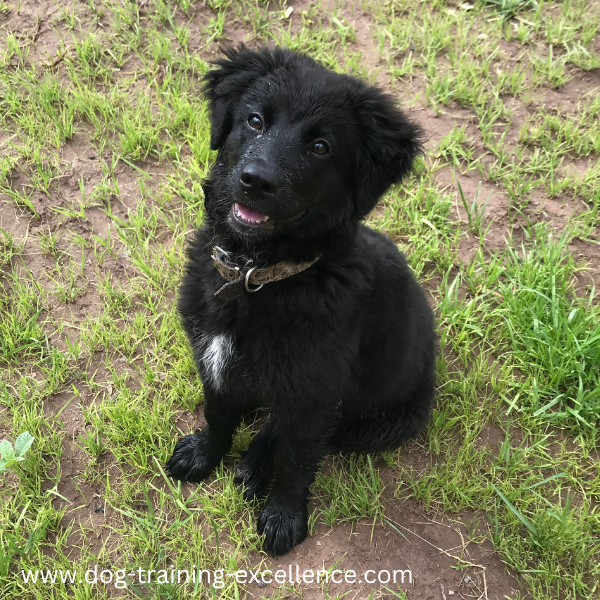
Daisy was a 4 month old, black lab mix female puppy, her owners called me to start her early education (which is the right decision!). We started with the first step any dog parent should do when potty training their puppy, detective work! Even though we know a 4 month old puppy may be able to old its bladder for an average of 4 hours, it’s important to know what are the most likely times she will want to pee. So, I set the parents to write down every time Daisy peed (time and place). Well, here is a little math for you… Daisy did pee every 4 hours - on average!
Her schedule was something like this:
- 7 AM pee
- 1 PM pee
- 5 PM pee
- 6:30 PM pee
- 8:00 PM pee
- 11:00 PM pee
So, that schedule is an average of 4 hours, however… you may notice that Daisy peed more often in the evening (3 times separated by 1-2 hours!). This is why it’s so important to do the detective work.
Step 1: find out your puppy's potty schedule
Grab a piece of paper and write down every time your puppy pees. Write down the date, time and place. You can put the paper on the fridge to have it near by and encourage everyone in the family to help out.
After 2-5 days you should be able to notice some sort of patter, keep in mind that it won't be perfect and that is OK.
As you do your detective work, keep in mind the rule about how long your puppy can hold its bladder along with the following rules:
Setting Up for Success (STEP 2)
Now that we've covered the basics of understanding your puppy's needs, let's dive into setting up the stage to successfully potty training a new puppy. This step is crucial as it creates the environment and provides the tools necessary for effective training.
Designated Puppy Potty Area (STEP 2.A)
Establishing a designated potty area is fundamental for a streamlined potty training process. Having a specific spot for your puppy to do their business reinforces the routine. Your pup will begin to associate that area with the act of going potty, making it easier for them to understand your expectations. In addition, concentrating your puppy's waste in one area makes cleanup more manageable. You can quickly remove waste from this spot, reducing the risk of lingering odors.
Choosing the Potty Spot:
Indoor specifics:
- Select an area that is easy to clean and has easy access for your puppy. For example, do not choose the most remote room in the house, if your puppy has to travel through 3 rooms to get to the potty area, it’s unlikely he will make it!
- This area should be free of noises, big scary machines or appliances that turn on automatically. This could scare your puppy and make him look for a different potty area.
- Some dogs have surface preferences. Some like wood, carpets or other absorbent materials that we do not want them to pee on. That is why it is important that you choose the right absorbent pad (more on this below).
Outdoor specifics:
- Select a corner of your yard where your puppy feels safe (no machines or big tools around, no strange odors like cleaning supplies).
- Mark this area with little flags or special plant pots for easy visual recognition of the area.
- Make sure your dog can go outside at any time (no closed doors in between) or that he has a bell or some other way to let you know he needs to go pee.
Tools and Supplies (STEP 2.B)
Recommended Positive Dog Training Tools
Positive dog trainers are known to use very little gadgets and tools. This is because we want training to be positive and won't use corrective leashes nor other corrective tools. We do use 3 very basic tools for dog training, here are my favorite ones:
The perfect treatThe perfect treat is small, yummy, healthy and easy to store just like Stewart Freeze Dried Dog Treats. Freeze dried treats are natural and easy to carry around without making a mess and dogs love them! |
The pouchProfessionals use treat pouches because they free your hands and help with timing. The best one have a magnetic clasp and a removable inner bag for easy washing like the Viklluyr Dog Treat Pouch. |
The clicker
This one is NOT an absolute must, but when you get to advanced training it will be a good tool to have. My favorite kind is a clicker ring, because it also keeps your hands free. Clicker training is fun! |
Potty training a new puppy requires essential tools and supplies. These include:
- Crate: A crate is a versatile and valuable tool in potty training. It provides a safe space for your puppy and can assist in preventing accidents indoors. Choose a crate that's appropriately sized, allowing your pup to stand, turn around, and lie down comfortably. More on crate training a puppy on this article…
- Leash and Collar/Harness: These are necessary for taking your puppy outside to their designated potty area. In the beginning you may want to restrain the dog with a leash, but once your puppy learns, you won’t need it anymore.
- Treats: High-value treats are your best friend in potty training. Use them as rewards when your puppy successfully goes potty in the designated area. High value treats can be small pieces of cheese or chicken or you can buy special treats (ideal to keep them near the potty area without them rotting). These are my favorite store-bought treats.
- Potty Training Pads: If you're doing indoor training, potty training pads can be a convenient solution. They're designed to absorb moisture and minimize mess.
Expert tip:
If your puppy thinks absorbent pads are chew toys and destroys them or sleeps on them instead of peeing on them, here are some tips to help you:
- Put the pad down only when its time to take your dog for potty time. Then pick it up so it is not available for your puppy to play or sleep on them.
- Put several pads down covering most of the designated surface, use double sided tape to prevent pads from moving around and puppy from grabbing them. As your puppy learns to pee on the pad surface, start making that surface smaller by taking pads progressively.
- Give your puppy enough toys and exercise to keep him away from the pads when it is not potty time.
- Cleaning Supplies: Invest in pet-safe cleaning products
specifically designed for cleaning up pet messes. Enzymatic cleaners are
particularly effective at removing odors that might attract your puppy
back to the same spot. Urine in particular is very hard to remove because the urea molecule attaches to surfaces very strongly. Enzymatic cleaners have enzymes that break the urea molecule so you can then clean it.
- Clicker (Optional): If you're using clicker training as a part of your potty training strategy, have a clicker on hand.
- Toys and Distractions: Different types of toys are essential to keep our puppy entertained in between potty breaks and to reward him with play after he pees/poos
Puppy potty training Must haves!
|
If you are only going to buy one thing, an Enzymatic Uriner Cleaner should be your pick! |
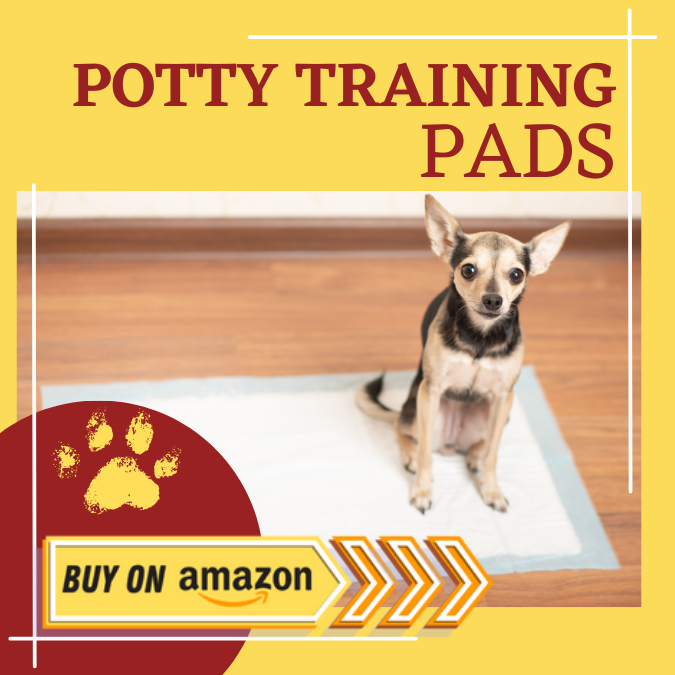 You can find dog potty training pads on amazon and buy 50 or 100 for a good price. | |
|
A good alternative to pads is to use synthetic grass. You can wash the tray and grass to keep it clean and avoid wasteful pads. |
Pick a crate that is big enough for your puppy to stand up and turn around but not so big he can pee in a corner. |
The Power of Consistency (STEP 2.C)
Consistency is the golden rule when potty training a new puppy, regardless of your dog's breed, age, or size. Puppies thrive on predictability and routine, and it's up to you to establish and maintain that consistency.
- Feeding Schedule: Set regular feeding times for your puppy. Most puppies need to eat 3 times per day. It’s important you give them food each time and take the food away 30 min later. Your puppy should not have food available at all times. Most puppies will need to relieve themselves shortly after eating, so establish a feeding schedule that aligns with potty breaks.
- Walking Routine: Consistent walks or outdoor breaks are essential. Take your puppy out at the same times each day, ideally after waking up, after meals, and before bedtime.
- Keep it clean: If you puppy has accidents (which is normal and will happen), clean the areas very will with an enzymatic cleaner to remove all odors that may attract your puppy to go there again.
Step-by-Step Guide to Potty Training A New Puppy (NEXT STEPS)
By now you should have a better idea of how often and during which times of the day your puppy needs to potty. You should also have all the necessary supplies, a designated potty area and your puppy should be on a regular eating and walking schedule. (You can do all of these in about 2-3 days!). Now it’s time to teach your puppy where to potty.
STEP3 - Positive reinforcement
Positive reinforcement is the heart of potty training. It's all about rewarding good behavior to encourage its repetition. Here's how to make it work:
- Take your puppy to the designated potty area during a time it is likely your puppy needs to potty. If it’s a small area (like a peed pad or a section of the yard) then put your puppy on the leash, take him/her to the place and wait there. Be completely boring, ignore your puppy and wait.
- As soon as your puppy pees or poos, wait until he is done and then praise and give him a treat.
- After the treat play for 2-3 minutes (tug, chase, ball, etc.)
- Repeat the above however often your puppy needs to potty. For example, if you have a 2 months old puppy, you will most likely be taking your puppy to potty every 1-2 hours (Yes! That is about 10-20 times a day!!!). As your puppy gets older, he will be able to old its bladder longer and longer until your reach the 3 times a day goal.
Your puppy will soon start giving you signals to let you know he needs to go potty. Pay close attention to these signals and take your puppy to the designated area immediately.
But keep in mind, not all signals are clear and obvious! Some puppies will stand next to the door, scratch the door or even bark at the door; these are clear and obvious signals. Other puppies may start pacing around or sniffing the floor more intently, this is not a very clear signal and you will need to pay close attention. Yet other dogs may give you completely unclear signals.
Case Study: Teddy
Can you tell if your puppy is telling you he needs to go potty?
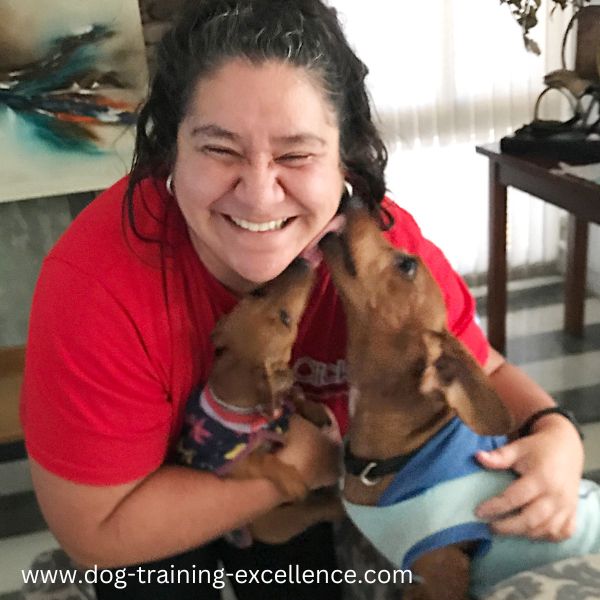
Mia was a Daschund puppy learning to potty outside, the owner had to put the leash on her and take her for a short walk for her to potty. According to Mia’s human, she was not giving any signals that she needed to go outside. However, after careful examination of her behavior we noticed that Mia always brought her human a toy “to play” but 5-10 min after bringing the toy, she would immediately pee inside. Bringing a toy was her way of getting her human’s attention and communicate she needed to go outside.
This example is why writing down every time your puppy pees (time, location and any other helpful detail) is so important. It will help you find a pattern and understand your dog better.
STEP 4 - Restraining schedule
This is an optional step, not all dogs need it, but it can help you achieve your goal faster. Your puppy should have a set schedule of activities, something that looks like this:
- Wake up and go to pee
- Eat and play then go to pee
- Rest
- Wake up and go to pee
- Eat and/or play then go to pee
- Rest
- An so on and so forth….
The question is what happens during that “rest” and “play” times, how can I help my puppy rest or play appropriately. The answer is to use restraining. This could be the use of a crate, where your puppy can be confined to rest or play with a chew toy. If you want to learn more about how to create a crate training schedule, follow this link.
If you decide not to use a crate, then make sure you keep an eye on your puppy, specially near pee times!
STEP 5 - Less restraining
As your puppy grows and starts -waiting- to go outside or asks every time to go outside, you can start fading out the crate and letting your puppy have more freedom to roam the house, follow you around or play with her toys anywhere in the house.
Potty training a new puppy -You did it! All it takes is a little planning, patience and treats!
Troubleshooting common challenges
Potty training a new puppy isn't always a smooth journey; it's important to recognize and address common obstacles that can arise during the process.
What do I do when my puppy has an accident?
The short answer is - You clean it up!
Despite your best efforts, accidents are a part of the potty training process. Here's how to handle them: Clean up accidents promptly. Use pet-safe enzymatic cleaners to thoroughly remove odors, as residual smells can attract your puppy back to the same spot.
Never scold or punish your puppy for accidents. It can create fear and anxiety, hindering the training process.
Case Study: Luna
The hidden pitfalls of punishment
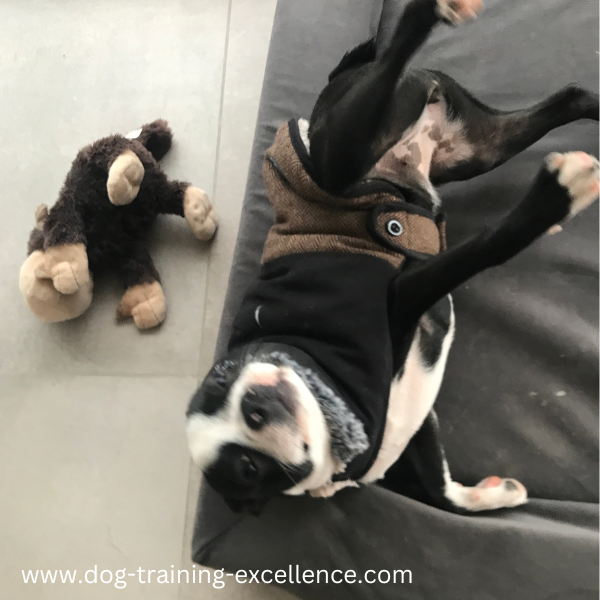
Luna was a cute Boston Terrier puppy, I was contacted because Luna peed all over the place, including beds, and they didn’t know what else to do. Unfortunately, Luna’s humans used punishment every time she peed where she shouldn’t. In between classes the family had a vacation and I agreed to take care of Luna for a few days.
What I saw when I had Luna in my house broke my heart. She would quickly pee and then run and hide under the bed. She was so scared of peeing she was trying to do it without me noticing or in hiding. This case is, unfortunately, not uncommon.
When you punish your puppy for peeing inside the house, your puppy most likely understands that your are punishing him for peeing (the "inside the house" gets lost in translation). Now, the puppy starts hiding to pee, because he is afraid of being punished (but he needs to pee, he can’t hold it any longer!). These puppies now start peeing in hiding and, guess what? This is the worst case to teach a puppy to potty outside because you need to praise and reward as soon as he is done, but if the puppy is afraid of you, he will never pee in front of you and you won’t be able to reward him!
The solution is patiently work to regain your puppy's trust, stop using punishment altogether and take your puppy to places where he can relax and pee (even in fron of you) so you can start rewarding it.
Moral of the story:
NEVER PUNISH YOUR PUPPY FOR PEEING (I don’t care where he peed). All you can do is take a deep breath, clean up and continue with the plan!
Why did my puppy stop being potty trained?
Many puppies can experiences potty training regression, if this happens to you, you need to go back at being a detective. There are many reason why a house trained dog suddenly has accidents.
1- You puppy never truly learned to potty in one place: Puppies are like little kids, they need lots of repetition and practice to truly learn something. You may think your puppy “knows” where to go potty, but if he/she is having accidents, chances are he needs more training. Solution: Go back to the plan above and keep reinforcing your puppy for potting in the right spot.
2- Your puppy may be feeling stressed or afraid: Many common daily situations may be stressful for your puppy. Maybe you stayed home the first couple of weeks after adoption and now you went back to work, leaving your puppy alone for hours at a time. This may cause stress which will make your puppy more likely to potty everywhere. Other examples of stress-causing situations are: moving to a new home, guests or family visiting and staying with you, new neighbors, new construction near by, any other stressful situation. Solution: Identify the stressor if possible and remove it (if possible) or work with a Certified Professional Dog Trainer to help your puppy overcome its fear. Then go back to potty training basics.
3- Medical issues: the most common reason for a potty trained dog to regress is a urinary infection. Your vet can treat this with an antibiotic and get your dog back to normal! There are other medical issues that can cause a dog to regress. Solution: check with your vet if you think your dog may have a health issue affecting his potty training.
Keep in mind that many dogs can keep having accidents until they are 6 months old. So, stay calm, breath, play with your new puppy and keep on with the potty training plan.
My puppy keeps peeing on the sofa (bed, rug, you name it!), What do I do?
It is possible your puppy likes specific surfaces, most puppies like soft and absorbent ones. Unfortunately, sofas, beds and rugs are excellent options. If your puppy has found a place he really likes to potty but you can’t accept as a potty place, the best option is to block that area until your puppy learns to go in the designated area and clean it thoroughly with an enzymatic cleaner. Yes, this means you may have to keep your puppy away from your room for couple of months. But think, what is “a couple or months” compared to “the rest of your dogs life”?!
Solution: Block the area and continue with the potty training plan.
Case study: Staffy was a cute mix-breed puppy learning to potty outside. She lived in a 2-bedroom apartment where most floors where ceramic, but the bedrooms had wood. Even though Staffy was learning to go potty outside, she sometimes would sneak into one of the rooms and pee on the wooden floor. My recommendation for Staffy was to keep the door of that room closed and continue with potty training. A couple of months later, Staffy was reliable peeing outside (even sitting at the door to signal she needed to go), and it was time to test the wooden floor. The owners open the door but Staffy never went there again.
It is all about creating a habit, we humans are taught to pee/poo in a toilet. From when we are really young we practice going potty in the toilet. If today somebody asks you to pee on a carpet in the living room, would you be able to do it? Not even with a threat, it would be very very difficult. That is what we are training our puppies to do, to pee/poo in the designated area until it is a habit and going anywhere else is out of the question.
Case study: Tom
When your dog REALLY loves to pee on wood.
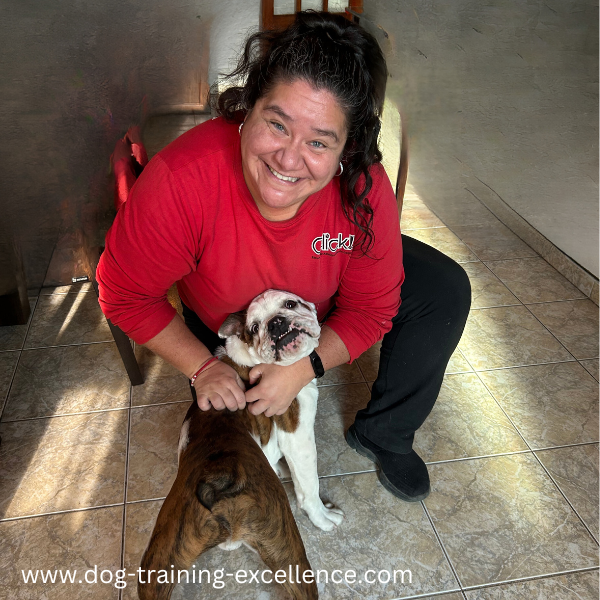
Tom was a cute English Bulldog puppy learning to potty outside. He lived in a 2-bedroom apartment where most floors where ceramic, but the bedrooms had wood. Even though Tom was learning to go potty outside, he sometimes would sneak into one of the rooms and pee on the wooden floor. My recommendation for Tom's caregivers was to keep the door of that room closed and continue with potty training. A couple of months later, Tom was reliable peeing outside (even sitting at the door to signal he needed to go), and it was time to test the wooden floor. The owners open the door of the bedroom, but Staffy never went there again!
Going above and beyond
If you follow the advice given so far for potty training a new puppy, you should be able to house train your dog without much problem. You may even get interested in continuing with training, that is great! In this section, I want to give you a few extra tips and things you can do to elevate the process to the next level.
Where you got your puppy matters
I know you already adopted your best friend, but I can’t end this article without educating you about responsible dog breeding. We can all make an impact on the well-being of many dogs.
Unfortunately, there are many people trying to make money the easy way and at the cost of the well-being of dogs. If you buy a puppy from a breeder, please make sure the breeder knows how to care for puppies (and the mom) before you adopt. There are many things a breeder can do to increase the chances of their puppies growing up as well-adjusted dogs, yes it starts THAT EARLY.
A good breeder will:
- Have an early socialization plan in place
- Teach puppies to pee and poo away from their bed and into a specific surface (newspaper, pads or grass)
- Give puppies their first vet check-up and vaccines
If you adopt from a good breeder, your chances of potty training a new puppy in a short-period of time increase 10-fold (just a figure of speach, but really!). If you adopted from a “puppy mill”, your chances of having a puppy with potty problems are very high.
Puppy mills are places where female dogs are forced to have a litter twice a year and dogs are kept in very small places which makes them pee and poo where they sleep and even start eating their own feces. After adoption you will see such behaviors in your puppy and will need to work harder to get him or her on the straight path.
How to avoid a puppy mill? ALWAYS ask to meet the puppies in person, you should be able to meet puppies and dog mom, check references from past adopters and see the conditions in which puppies are being bred.
The best way to get rid of puppy mills is to stop buying from them.
There is a breeder program called "Puppy Culture", it's a great program that teaches breeders how to best care for the puppies until they are adopted. They can start teaching them potty training, prevent aggression problems, start early socialization and a lot more. If your breeder follows the "Puppy Culture" program, it's a good sign!
Teach your puppy a pee and/or poo command
Potty training a new puppy with specific potty-related commands can be highly effective. For example, you can use words like "go potty”, "do your business" or “showtime” to signal when it's time for them to eliminate.
How to Teach the “Go potty” command?
- Again, be a detective. Learn the body signals your dog does right -before- peeing. You also already know the most likely times he is likely to potty (after a nap, eating or playing).
- As soon as your dog start showing those signs that he is about to pee say “Go potty” (without scaring him).
- Let him finish potting, mark and reward!
- Repeat! (This can actually take a few weeks).
- When your think your dog has made the association between the cue and the behavior, it’s time to test it. Go outside and say the cue, does he go? Reward! He didn’t? Keep practicing.
Teaching your dog to pee and/or poo on command is a required skill for service dogs. For example, guide dogs for the blind can’t poo in the street (how would the owner pick up the poop?). So, they are taught to pee/poo on command in the yard before going out.
Teach your puppy to ring a bell to go potty
If you puppy is not giving you any clear signals that he or she needs to go potty, you can teach him to do it.
Potty training a new puppy to touch a bell:
- Put the bell close to your dog nose, as they touch it, mark and reward!
- Repeat until they can touch the bell even when it’s further away.
- Place the bell at the door and reward your dog for touching it there as well.
- Next time it is time to let your dog go outside, ask him to touch the bell, as soon as he does, praise and open the door! (Now opening the door will become the reward).
- Repeat every time you let your dog out the door
- Be alert for when your dog rings the bell! If your don’t pay attention, he will stop using it.
Frequently Asked Questions About Potty Training a new Puppy
How old does my puppy need to be before I can start housebreaking him?
How old does my puppy need to be before I can start housebreaking him?
It doesn't matter! You can start potty training a new puppy as early as the first day you adopt. Your breeder can even start potty training puppies even before they are adopted! So, don't wait...start now!
As a side note: there is no age limit to potty train a dog, not matter if they are adolescents or adult dogs, you can train any dog at any age to pee/poo in a certain place.
If my puppy can go all night without going potty, can he also hold it for 8 hours during the day?
If my puppy can go all night without going potty, can he also hold it for 8 hours during the day?
No, he cannot. Some puppies (but not all, not even the majority) can hold their pee all night. However, they will need to pee more often during the day following the rules we talked about above.
Does rubbing a dog’s nose in its pee help with potty training?
Does rubbing a dog’s nose in its pee help with potty training?
Absolutely, NO! Remember, you can't punish your puppy to potty train him, this will cause a lot of unwanted setbacks.
Some people think that by rubbing the dog's nose he will understand he did something wrong. This is NOT TRUE, most likely your puppy is wondering (terrified) why suddenly you became such a crazy person.
Just take a deep breath, clean the mess with an enzymatic cleaner and keep on going with the plan!
Do potty training attractants or deterer sprays work?
Do potty training attractants or deterer sprays work?
In my experience they do not work and they are not even needed for potty training a new puppy. If you follow the advice above and use enzymatic cleaners you should successfully navigate potty training a new puppy!
My dog will be alone for more than 8 hours, can he/she old his pee for longer than that?
My dog will be alone for more than 8 hours, can he/she old his pee for longer than that?
No. Some dogs can hold their pee for 10-12 hours, however it is not recommended you force your dog to hold pee for so long, this can bring unwanted health issues down the road.
Enjoy your new puppy!
In conclusion, potty training a new puppy is a milestone that lays the foundation for a harmonious and loving relationship with your new pet. By following the step-by-step guide provided in this article, you're equipped with the knowledge and techniques to navigate this essential phase of your puppy's life.
To summarize the key takeaways:
- Consistency and patience are your best allies. Stick to a routine and remain patient during the learning process.
- Use positive reinforcement to encourage desired behavior. Praise, treats, and affection go a long way in motivating your puppy.
- Adapt to your puppy's unique needs. Every dog is different, and you may need to adjust your training schedule to suit their personality and quirks.
Potty training a new puppy may have its challenges, but the reward of a well-trained, well-adjusted, and happy puppy is more than worth it.
Remember that your puppy's success is also your success. Celebrate each step in the right direction and cherish the moments as you watch your furry companion grow into a well-behaved, delightful adult dog.
Ready to Train Your Puppy the Smart Way?
I’m Dr. Natalia Rozas, Certified Professional Dog Trainer and Neuroscientist.
The NeoPuppy Program combines 80+ short videos and 4 online private coaching sessions so you can train your puppy effectively and kindly, backed by science.
✅ Train at your own pace
✅ Personalized online guidance
✅ Results without stress or punishment
👉 Explore the NeoPuppy Program
The article "Potty Training a New Puppy" was written by Natalia Rozas, Ph.D. and Certified Professional Dog Trainer (CPDT-KA #4071465) and updated on on March 28th, 2024. The case studies and anecdotes are real but to protect the privacy of our clients the names and details are changed.
- Home
- Potty Training a New Puppy
